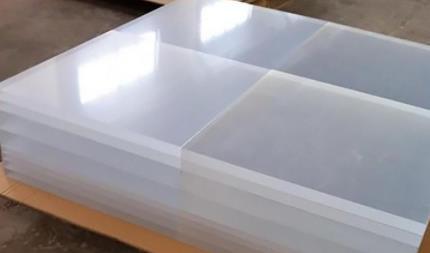Acrylic, also known as PMMA or Plexiglass, is a highly popular and CNC-friendly material, often referred to as the "King of Plastics." It is especially suitable for CNC milling and turning applications.
Core Properties of Acrylic
Acrylic is best known as the "transparent plastic king," and its performance is centered around this feature.
| Property | Description | Advantages & Notes |
|---|---|---|
| High Transparency | Light transmittance up to 92%, higher than glass (80–90%). | Ideal for lightboxes, display covers, and optical lenses. |
| Excellent Weather Resistance | UV, rain, and temperature resistant; does not yellow or become brittle easily. | Perfect for outdoor signs and building windows. |
| High Strength & Rigidity | Half the weight of glass, but 10–15x stronger in impact resistance. | Durable but scratches easily compared to glass. |
| Good Machinability | Easy to CNC machine, cut, drill, bend, and bond. | Excellent for prototypes and custom production. |
| Electrical Insulation | Non-conductive, good insulating properties. | Widely used in electronics components. |
| Flammability | Highly flammable, burns with clean flame. | Keep away from fire or use flame-retardant grades. |
| Chemical Resistance | Resistant to weak acids, bases, alcohols, and oils. | Can be corroded by strong acids/bases, acetone, esters, chlorinated solvents. |
Main Types and Grades of Acrylic
1. By Manufacturing Process
This is the most important classification when selecting acrylic.
- Cast Acrylic Sheet: Made by pouring liquid MMA monomer into molds, then polymerized under heat and pressure.
- Extruded Acrylic Sheet: Produced by melting PMMA pellets and extruding through molds.
| Feature | Cast Acrylic | Extruded Acrylic |
|---|---|---|
| Molecular Weight | High | Low |
| Thickness Tolerance | Wide range but larger tolerances | Very precise and uniform |
| Machinability | Better for CNC, engraving, bending, polishing | Easier to thermoform, may gum up during CNC |
| Chemical Resistance | Higher | Lower |
| Cost | Higher | Lower |
| Applications | Trophies, precision parts, aquariums, bathtubs | Lightboxes, displays, partitions, signs |
Summary: Choose cast acrylic for CNC precision machining, and extruded acrylic for thermoforming or large sheets.
2. By Performance and Function
- General grade: Standard type with balanced performance.
- Impact-modified grade: Stronger, less brittle, slightly reduced clarity.
- UV-resistant grade: Enhanced outdoor durability.
- Flame-retardant grade: Meets UL-94 V0/V1/V2 standards.
- Colors & Finishes: Transparent, tinted, frosted, opaque, mirrored.
3. Common Brands
- Plexiglas (Röhm): High-end cast (GS) and extruded (XT) series.
- Lucite: A major MMA supplier used by many sheet manufacturers.
- Altuglas / Deglas: International well-known brands.
- Mitsubishi Chemical: Shinkolite series.
- Chinese manufacturers: Local cast and extruded sheets at lower cost.
Why Acrylic is CNC-Friendly
- Moderate hardness makes it easy to cut.
- Stable and dimensionally reliable.
- Predictable cutting behavior.
- Exceptional surface finish and clarity after machining.
Main CNC Challenges and Solutions
| Challenge | Cause | Solution |
|---|---|---|
| Chipping / Cracking | Brittle material, dull tools, wrong parameters | Use sharp O-flute cutters, climb milling, reduce feed |
| Frosting / White Surface | Excessive heat, tool rubbing | Sharp tools, lower RPM, smaller DOC, use air cooling |
| Melting | Heat buildup, poor chip removal | Increase feed, ensure chip evacuation, air blast |
| Drilling Cracks | Drill wedge pressure at exit | Use 90°–120° drill bits, backing boards, slow feed at exit |
Key CNC Tips
- Tool Selection: Best choice is single-flute O-flute cutters. Avoid multi-flute tools.
- Cutting Parameters: High RPM, moderate-to-fast feed, shallow stepovers for finishing.
- Cooling: Compressed air preferred. Mist coolant for precision jobs.
- Finishing: Flame polishing, sanding + buffing, or solvent polishing for crystal-clear edges.
Applications
Acrylic CNC machining is widely used in prototypes, signage, displays, lightboxes, and models. For simple 2D profiles, laser cutting is faster with smoother edges. However, for 3D features, recesses, or steps, CNC machining is unmatched.
Conclusion: With the right tools (O-flute cutters) and proper parameters (high RPM, fast feed, good chip removal), acrylic can be machined to achieve stunning, glass-like results.



